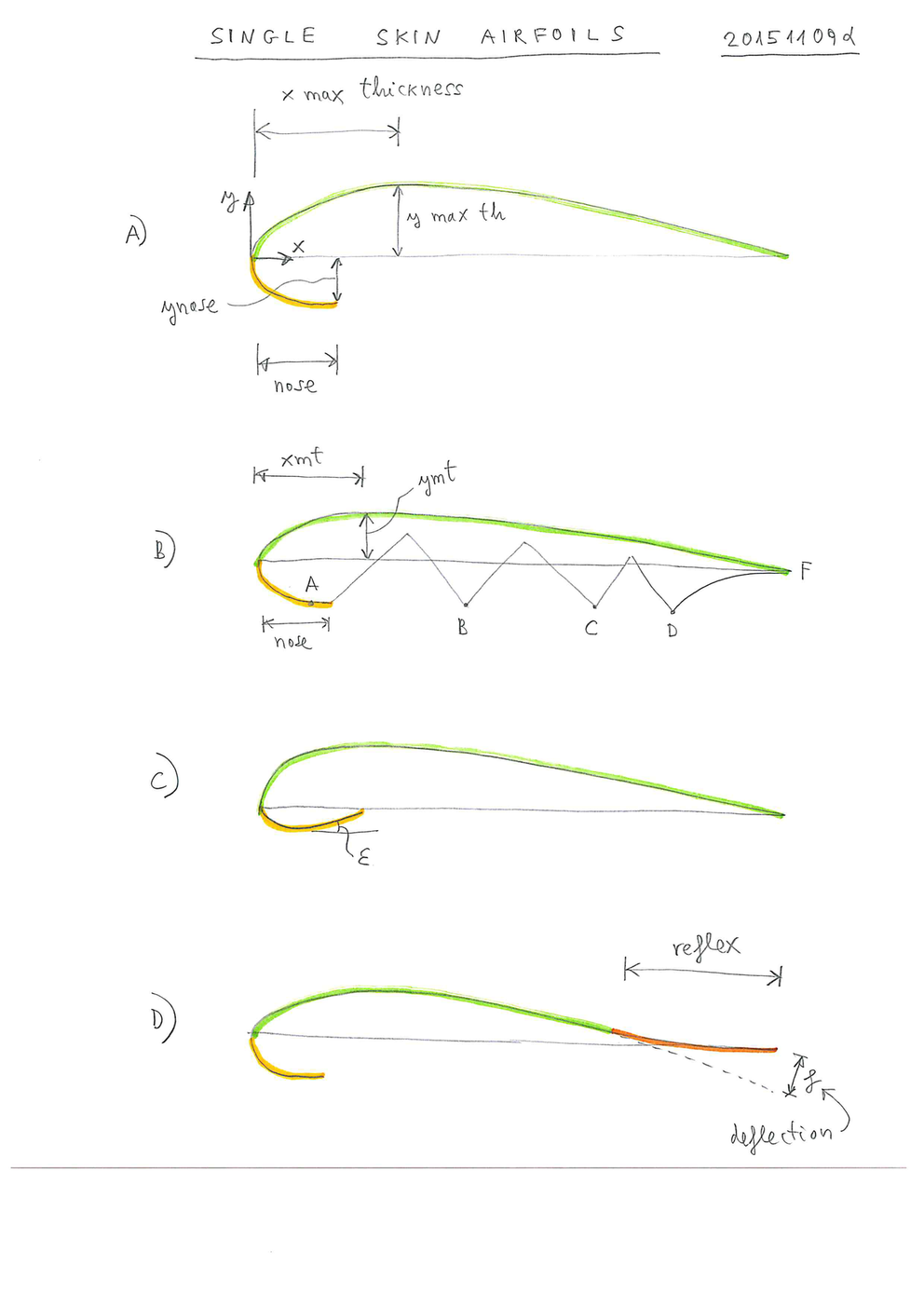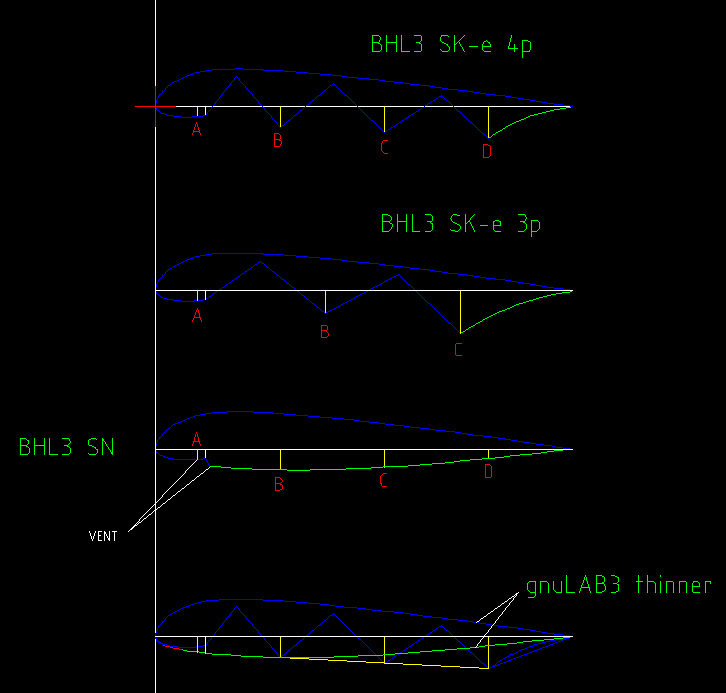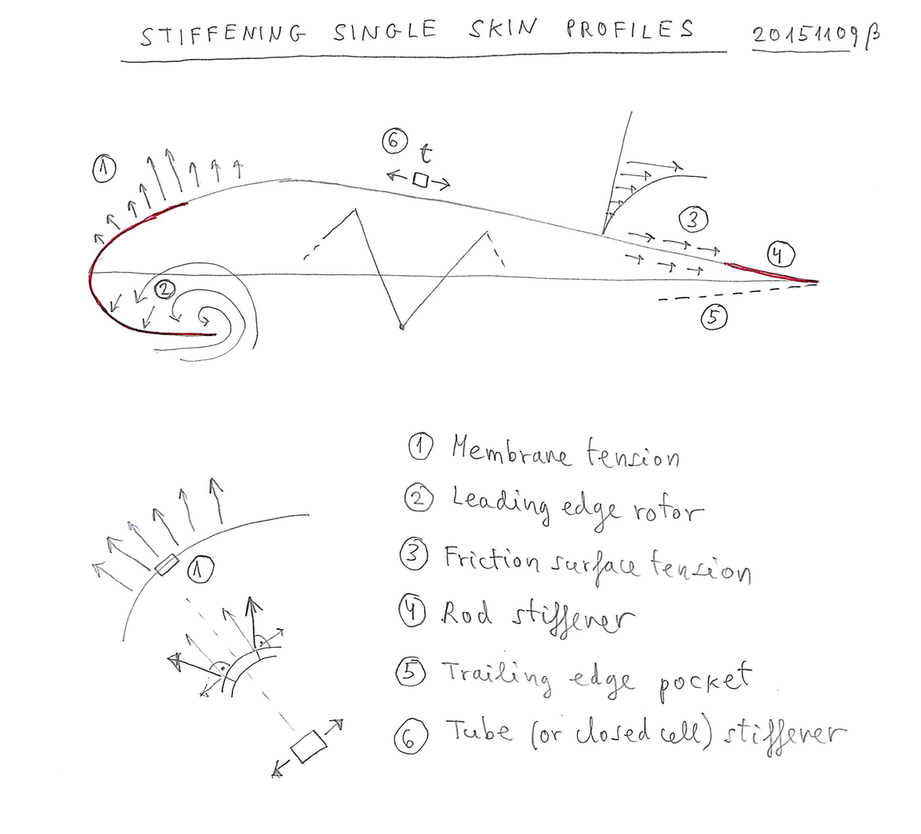
A)
"Normal" profile (type BHL1 and BHL2). Consider the following parameters:
nose: double surface in nose (10%)
ynose: height of the nose (negative value)
xmth:
position of maximum thickness upper surface
ymth: value of maximum thickness upper surface
B) Thinner profile. Aims to reduce aerodynamic drag. Consider same parameters. Consider also the coordinates of the fixing points (A,B,C...)
C) Consider the nose, tilted an angle "epsilon", similar to the inclination of the trajectory. Aims to reduce aerodynamic drag
D) Imagine a reflex profile. It seems impossible. But even the same normal single skin normal profile, it seems impossible. The main interest, to imagine a reflex profile functioning properly is to use profiles without braking at the trailing edge, and consequently fast.

2016-11-05: Please do not use BHL3 profile.
I experienced problems with this profile in a prototype
has little lift (!). Soon, new version.
Some airfoils implemented in BHL3
Download dxf file and xls spreadshet (.zip format)
Airfoils: bhl3-4p bhl3-3p bhl3-ta
2) Some mechanisms to stiffening single skin profiles

1. Membrane tension. Tensile stress in the plane itself of the tissue, derived from the concavity.
2. Leading edge rotor. This effect is to be confirmed experimentally.
3. Friction surface tension. At this moment, I can not assess whether this effect is really significant.
4. Rod stiffener, used in leading or trailing edge. Works.
5. Trailing edge pocket. This system helps tighten the trailing edge, but increases drag.
6. Tube (or closed cell) stiffener. Some normal cells help maintain tension. The concept "single skin" becomes mixed. And is possible imagine gradual transitions between single skin and double skin. The single skin panels seem to dominate much the behavior in relation to quickly inflate and reinflate.
7. Tensioned rib (triangle or parabola) acting as a plate.
3) Reducing lines using V-ribs, normal cells, V-cells...
Some experiments to do in BHL3 "x" project
(to continue...)
4) Planform and vault
(to continue...)
Be attentive to new BHL3 incorporating some of these things.



